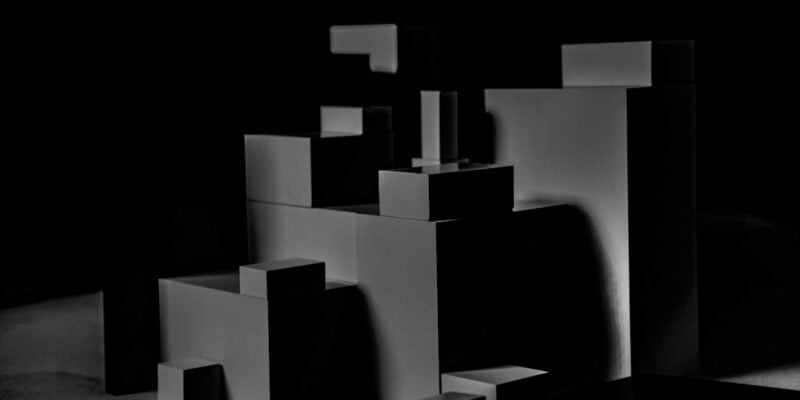
Mastering Proper Form for Effective Crunches: A Step-by-Step Guide
Cable crunches are a popular exercise for targeting the core muscles and achieving a strong and toned midsection. However, like any exercise, it is important to perform cable crunches with proper form to maximize their effectiveness and reduce the risk of injury. In this article, we will discuss the benefits of proper form in cable crunches, the anatomy of the core muscles, warm-up exercises to prepare for cable crunches, a step-by-step guide on how to perform cable crunches with proper form, common mistakes to avoid, variations for a more challenging workout, incorporating cable crunches into your fitness routine, tips for maintaining proper form, and the importance of proper form in achieving optimal results.
Key Takeaways
- Proper form in cable crunches can help prevent injury and maximize results
- Understanding the anatomy of the core muscles is important for effective cable crunches
- Warm-up exercises can help prepare the body for cable crunches
- A step-by-step guide can help ensure proper form in cable crunches
- Variations of cable crunches can provide a more challenging workout and prevent boredom
Benefits of Proper Form in Crunches
Performing cable crunches with proper form offers several benefits. First and foremost, it reduces the risk of injury. When you maintain proper form, you engage the correct muscles and avoid putting unnecessary strain on other parts of your body. This can help prevent strains, sprains, and other injuries that can occur when performing exercises incorrectly.
Proper form also maximizes the effectiveness of the exercise. When you perform cable crunches with proper form, you target the core muscles more effectively and efficiently. This means that you will get better results in terms of strength and muscle tone. Additionally, proper form ensures that you are engaging the correct muscles throughout the entire range of motion, which helps to develop balanced strength in your core.
Understanding the Anatomy of the Core Muscles
To understand why proper form is important in cable crunches, it is helpful to have a basic understanding of the anatomy of the core muscles. The core is made up of several muscles, including the rectus abdominis (the “six-pack” muscles), transverse abdominis (deep abdominal muscles), obliques (side abdominal muscles), and erector spinae (lower back muscles).
When performing cable crunches, the primary muscles targeted are the rectus abdominis and the obliques. The rectus abdominis is responsible for flexing the spine, while the obliques assist in rotation and lateral flexion of the spine. By performing cable crunches with proper form, you can effectively target and strengthen these muscles.
Preparing for Cable Crunches: Warm-Up Exercises
| Exercise | Description | Reps | Sets | Rest Time |
|---|---|---|---|---|
| Jumping Jacks | Jumping with arms and legs spread wide | 20 | 2 | 30 seconds |
| High Knees | Running in place with knees lifted high | 20 | 2 | 30 seconds |
| Butt Kicks | Running in place with heels lifted to touch butt | 20 | 2 | 30 seconds |
| Arm Circles | Rotating arms in small and large circles | 10 each direction | 2 | 30 seconds |
| Trunk Twists | Standing with feet shoulder-width apart and twisting torso side to side | 20 | 2 | 30 seconds |
Before performing cable crunches, it is important to warm up your body to prevent injury and prepare your muscles for the exercise. Here are some warm-up exercises that can help:
1. Cat-Cow Stretch: Start on all fours with your hands directly under your shoulders and your knees under your hips. Inhale as you arch your back and lift your chest towards the ceiling (cow pose), then exhale as you round your back and tuck your chin towards your chest (cat pose). Repeat this movement for 10-15 reps.
2. Plank: Begin in a push-up position with your hands directly under your shoulders and your body in a straight line from head to heels. Hold this position for 30-60 seconds, engaging your core muscles throughout.
3. Side Plank: Lie on your side with your forearm on the ground and your elbow directly under your shoulder. Lift your hips off the ground, creating a straight line from head to heels. Hold this position for 30-60 seconds on each side.
4. Russian Twists: Sit on the ground with your knees bent and feet flat on the floor. Lean back slightly, keeping your back straight, and lift your feet off the ground. Hold a weight or medicine ball in front of you and twist your torso from side to side, touching the weight to the ground on each side. Repeat for 10-15 reps on each side.
Performing these warm-up exercises will help increase blood flow to the muscles, improve flexibility, and activate the core muscles, preparing your body for cable crunches.
Mastering the Cable Crunch Proper Form: Step-by-Step Guide
To perform cable crunches with proper form, follow these steps:
1. Set up the cable machine: Attach a rope handle to the high pulley of a cable machine. Adjust the weight to a challenging but manageable level.
2. Kneel down facing away from the machine and grab the rope handle with both hands, palms facing each other. Place your hands on either side of your head, just above your ears.
3. Position yourself so that your knees are hip-width apart and your shins are parallel to the ground. Your hips should be slightly flexed, and your glutes should be engaged.
4. Begin the movement by flexing your spine and bringing your elbows towards your thighs. Keep your neck in a neutral position and avoid tucking your chin into your chest.
5. Exhale as you contract your abs and curl your torso towards your thighs. Focus on using your core muscles to initiate the movement, rather than pulling with your arms.
6. Pause for a moment at the peak of the contraction, then slowly return to the starting position, inhaling as you do so.
7. Repeat for the desired number of reps, maintaining proper form throughout.
Common Mistakes to Avoid in Cable Crunches

When performing cable crunches, it is important to avoid common mistakes that can compromise form and reduce the effectiveness of the exercise. Here are some mistakes to watch out for:
1. Using momentum: One common mistake is using momentum to swing the body and generate force instead of relying on the core muscles. This not only reduces the effectiveness of the exercise but also increases the risk of injury. Focus on using controlled movements and engaging the core muscles throughout.
2. Pulling with the arms: Another mistake is relying too much on the arms to pull the weight, rather than using the core muscles. Remember that the primary goal of cable crunches is to target and strengthen the core, so focus on using your abs to initiate and control the movement.
3. Tucking the chin: It is important to keep your neck in a neutral position throughout the exercise. Avoid tucking your chin into your chest, as this can strain the neck and reduce the effectiveness of the exercise. Instead, keep your gaze forward and maintain a straight line from your head to your tailbone.
4. Not engaging the glutes: The glutes play an important role in stabilizing the body during cable crunches. Make sure to engage your glutes throughout the exercise to maintain proper alignment and stability.
By avoiding these common mistakes, you can ensure that you are performing cable crunches with proper form and maximizing their effectiveness.
Variations of Cable Crunches for a More Challenging Workout
Once you have mastered the basic cable crunch with proper form, you can incorporate variations to increase the intensity of the exercise and challenge your core muscles even more. Here are some variations to try:
1. Cable Crunch with Rotation: Perform a cable crunch as described earlier, but add a rotation at the peak of the contraction. As you curl your torso towards your thighs, twist your torso to one side, bringing one elbow towards the opposite knee. Return to the starting position and repeat on the other side.
2. Cable Crunch with Resistance Bands: Attach resistance bands to the cable machine and hold onto them instead of using a rope handle. This adds an extra challenge by increasing resistance throughout the movement.
3. Cable Crunch on Stability Ball: Place a stability ball between your lower back and a wall, then perform cable crunches while maintaining contact with the ball. This adds an element of instability, forcing your core muscles to work harder to stabilize your body.
4. Cable Crunch with Weight Plate: Hold a weight plate against your chest as you perform cable crunches. This adds resistance and increases the challenge for your core muscles.
By incorporating these variations into your cable crunch routine, you can continue to challenge your core muscles and make progress towards your fitness goals.
Incorporating Cable Crunches into Your Fitness Routine
To incorporate cable crunches into your fitness routine, it is important to determine the frequency at which they should be performed. As with any exercise, it is important to give your muscles time to recover between workouts. Aim to perform cable crunches 2-3 times per week, allowing at least one day of rest between sessions.
When designing your fitness routine, consider pairing cable crunches with other exercises that target the core muscles, such as planks, Russian twists, and leg raises. This will help ensure that you are working all aspects of your core and achieving balanced strength and muscle tone.
Tips for Maintaining Proper Form in Cable Crunches
To maintain proper form in cable crunches, keep the following tips in mind:
1. Focus on the contraction: Instead of simply going through the motions, focus on contracting your abs and engaging your core muscles throughout the entire range of motion. This will ensure that you are targeting the correct muscles and maximizing the effectiveness of the exercise.
2. Breathe properly: Exhale as you contract your abs and curl your torso towards your thighs, and inhale as you return to the starting position. Proper breathing helps to stabilize the core and maintain proper form.
3. Avoid rounding the back: Keep your back straight throughout the exercise and avoid rounding or arching it excessively. This will help prevent strain on the spine and maintain proper alignment.
4. Use a challenging but manageable weight: Choose a weight that challenges your core muscles without compromising form. If you find that you are using momentum or relying too much on your arms, reduce the weight until you can perform the exercise with proper form.
By following these tips, you can ensure that you are maintaining proper form in cable crunches and achieving optimal results.
Achieving Optimal Results with Proper Form in Cable Crunches
In conclusion, performing cable crunches with proper form is essential for maximizing their effectiveness and reducing the risk of injury. By engaging the correct muscles and avoiding common mistakes, you can target and strengthen your core muscles more effectively. Incorporating warm-up exercises, following a step-by-step guide, and incorporating variations can help you achieve a challenging and effective workout. By maintaining proper form and incorporating cable crunches into your fitness routine, you can achieve optimal results in terms of strength and muscle tone in your core. So remember to focus on proper form and enjoy the benefits of cable crunches for a strong and toned midsection.
If you’re looking to perfect your form for crunches, you might find this article from Wave Magnets helpful. They provide valuable insights and tips on how to execute crunches with proper form, ensuring maximum effectiveness and minimizing the risk of injury. Check out their article on proper form for crunches here.
FAQs
What are crunches?
Crunches are a type of exercise that targets the abdominal muscles. It involves lying on your back with your knees bent and feet flat on the ground, then lifting your shoulders off the ground while keeping your lower back pressed into the floor.
Why is proper form important for crunches?
Proper form is important for crunches to ensure that you are targeting the correct muscles and avoiding injury. Using improper form can put unnecessary strain on your neck, back, and shoulders.
What is the correct form for crunches?
The correct form for crunches involves keeping your feet flat on the ground, your knees bent, and your hands behind your head or crossed over your chest. As you lift your shoulders off the ground, focus on contracting your abdominal muscles and exhaling.
What are some common mistakes people make when doing crunches?
Some common mistakes people make when doing crunches include pulling on their neck, rounding their back, and using momentum to lift their shoulders off the ground. These mistakes can lead to strain and injury.
How many crunches should I do?
The number of crunches you should do depends on your fitness level and goals. It is generally recommended to start with a small number of repetitions, such as 10-15, and gradually increase as you become stronger. It is also important to incorporate other exercises that target the abdominal muscles for a well-rounded workout.


















